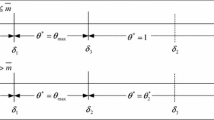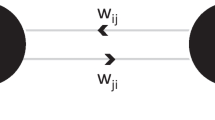Abstract
Since government fiscal policy stimulates firms and is expected to produce spillover effects, it is important to know the effects on the economy. The government’s approach can be rephrased as control of the economy, because governments have ideal states of the economy, and they want to lead it to the states. Here, we investigate a firm production network observed exhaustively in Japan and determine which firms should be directly or indirectly controlled using the framework of controllability. We can classify firms into three different types: (a) firms that should be directly controlled; (b) firms that should be indirectly controlled; and (c) neither of them. Since there is a direction (supplier and client) in the production network, we can consider controls of two different directions: the demand and supply sides. We obtain the following results: (1) each industry has diverse share of firms that should be controlled directly or indirectly. The configurations of the shares in industries are different between demand and supply sides; (2) advancement of industries that are divided into primary industries or other advanced industries do not show apparent difference in controllability; and (3) if we clip a network in descending order of capital size, we do not lose the control effect for both demand and supply sides.







Similar content being viewed by others
Notes
The study that addresses the framework of controllability (Liu et al. 2011) uses weight matrixes of links. However, this paper also proves that we only need to know the existence of directed links with arbitrary weights to calculate controllability.
References
Acemoglu D, Carvalho VM, Ozdaglar A, Alireza T (2012) The network origins of aggregate fluctuations. Econometrica 80(5):1977–2016
Barabási AL, Albert R (1999) Emergence of scaling in random networks. Science 286:509–512
Barabási AL, Albert R (2002) Statistical mechanics of complex networks. Rev Mod Phys 74:47–97
Delpini D, Battiston S, Riccaboni M, Gabbi G, Pammolli F, Caldarelli G (2013) Evolution of controllability in interbank networks. Sci Rep 3:1626
Easterly W, Rebelo S (1993) Fiscal policy and economic growth. J Monet Econ 32:417–458
Fujiwara Y, Aoyama H (2010) Large-scale structure of a nation-wide production network. Eur Phys J B 77(4):565–580
Galbiati M, Delpini D, Battiston S (2013) The power to control. Nat Phys 9(3):126–128
Inoue H, Todo Y (2017) Propagation of negative shocks through firm networks: evidence from simulation on comprehensive supply-chain data. RIETI Discussion Paper Series XX-E-00X. https://ssrn.com/abstract=2932559
Kalman RE (1963) Mathematical description of linear dynamical systems. J Soc Indus Appl Math Ser A: Control 1(2):152–192
Leontief WW (1936) Quantitative input and output relations in the economic systems of the United States. Rev Econ Stat 18(3):105–125
Liu Y, Slotine JJ, Barabási AL (2011) Controllability of complex networks. Nature 473(7346):167–173
Luenberger D (1979) Introduction to dynamic systems: theory, models, and applications. Wiley, New York
Ministry of Internal Affairs and Communications (2013) The Japan standard industrial classification (JSIC) summary of development of the JSIC and its eleventh revision
Romp W, de Haan J (2007) Public capital and economic growth: a critical survey. Perspektiven der Wirtschaftspolitik 8(S1):6–52
Slotine JJE, Li W (1991) Applied nonlinear control. Prentice-hall Englewood Cliffs, Prentice Hall
Author information
Authors and Affiliations
Corresponding author
Additional information
This study is conducted as part of the “Price Network and Dynamics of Small and Medium Enterprises” project undertaken by the Research Institute of Economy, Trade and Industry (RIETI). The authors thank the RIETI for various means of support. We thank Hiroshi Yoshikawa, Hideaki Aoyama, Hiroshi Iyetomi, Yuichi Ikeda, Yoshi Fujiwara, Wataru Soma, Yoshiyuki Arata, and attendees of the internal seminar of RIETI for their helpful comments. In addition, we thank Yang-Yu Liu for sharing his program codes and providing helpful comments. We gratefully acknowledge financial support from the Japan Society for the Promotion of Science (No. 15K01217).
About this article
Cite this article
Inoue, H. Controllability analyses of nation-wide firm networks. Evolut Inst Econ Rev 14, 335–349 (2017). https://doi.org/10.1007/s40844-017-0076-3
Published:
Issue Date:
DOI: https://doi.org/10.1007/s40844-017-0076-3




